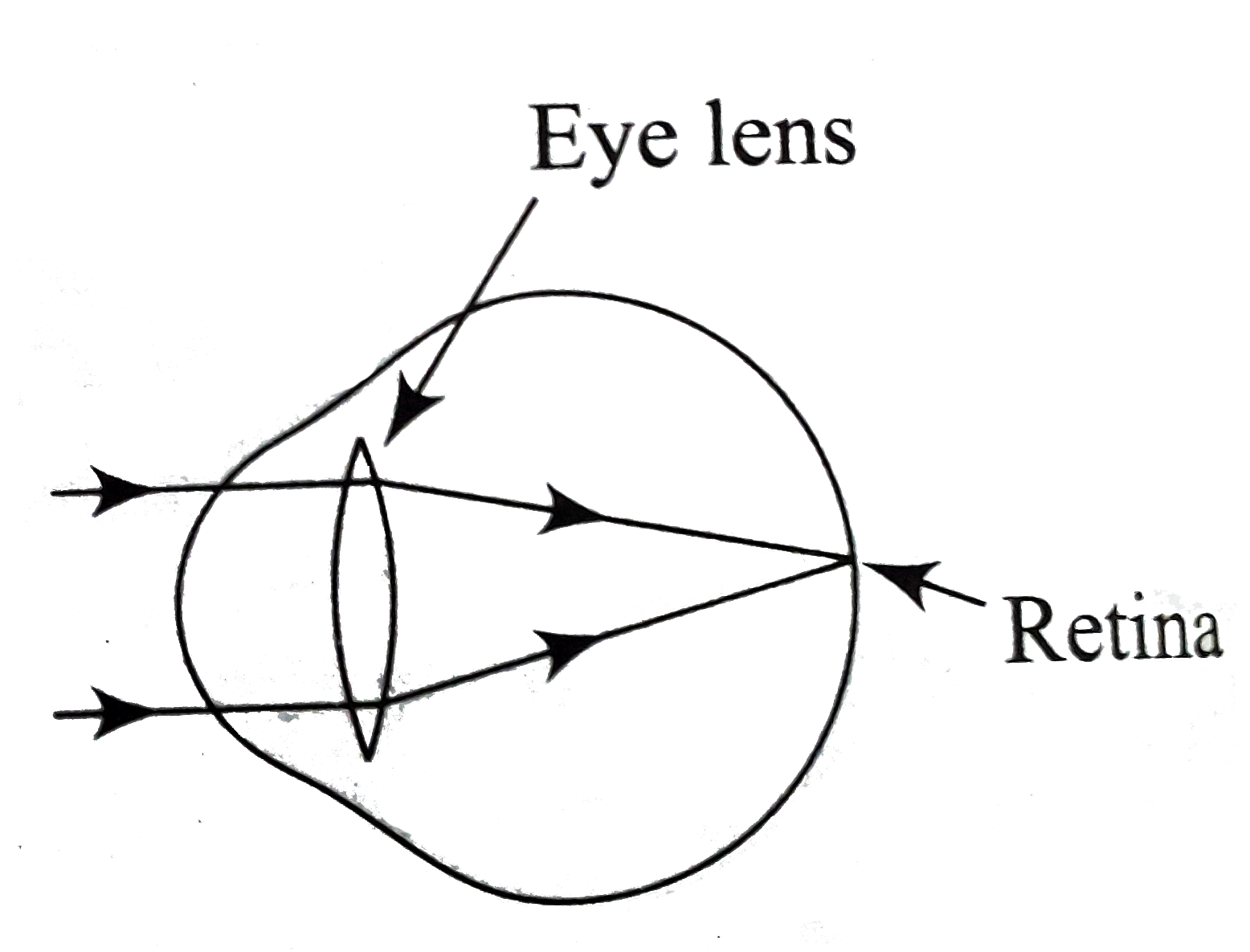In a person who uses concave lenses, if he removes his spectacles, then in his eyes, image of the object will be formed
behind retina
on fovea centralis
in front of retina
far from retina
in front of retina
Topper's Solved these Questions
- NERVOUS SYSTEM AND SENSE ORGANS : CONTROL AND CO-ORDINATIONBOOK - CENGAGE BIOLOGYCHAPTER - NERVOUS SYSTEM AND SENSE ORGANS : CONTROL AND CO-ORDINATIONEXERCISE - CHALLENGING EXERCISE
2 Videos
- NERVOUS SYSTEM AND SENSE ORGANS : CONTROL AND CO-ORDINATIONBOOK - CENGAGE BIOLOGYCHAPTER - NERVOUS SYSTEM AND SENSE ORGANS : CONTROL AND CO-ORDINATIONEXERCISE - CONSOLIDATED EXERCISE
66 Videos
- MENDELIAN INHERITANCEBOOK - CENGAGE BIOLOGYCHAPTER - MENDELIAN INHERITANCEEXERCISE - CHALLENGING EXERCISE
12 Videos
- NUTRITION IN PLANTS AND ANIMALS BOOK - CENGAGE BIOLOGYCHAPTER - NUTRITION IN PLANTS AND ANIMALS EXERCISE - CHALLENGING EXERCISE
4 Videos
Similar Questions
Knowledge Check
A person uses concave lenses, if he sees after removing his spectacles, then in his eyes image of the object will be formed
Abehind retinaBon fovea centralisCin front of retinaDfar from retinaA person uses concave lenses, if he sees after removing its spectacles, then in his eyes image of the object will be formed
Abehind retinaBon fovea centralisCin front of retinaDfar from retinaSuppose a person wears convex glasses for proper vision. Where you think the image of the object is formed in his eyes when he is not using the glasses?
Aon the yellow spotBbehind the retinaCin front of the retinaDon the blind spot
Explain how concave lenses are used in the following devices.
Spectacles
View SolutionSuppose a person wears convex galsses for proper vision. Where you think the image of the object is formed in his eyes when he is not using the glasses
View SolutionSuppose a person wears convex galsses for proper vision. Where you think the image of the object is formed in his eyes when he is not using the glasses
View SolutionA person is using a concave lens for his clear vision. Then he must be suffering from
View SolutionThe ciliary muscles of eye control the curvature of the lens in the eye and hence can alter the effective focal length of the system. When the muscles are fully relaxed, the focal length is maximum. When the muscles are strained, the curvature of lens increases. That means radius of curvature decreases and focal length decreases. For a clear vision, the image must be on the retina. The image distance is therefore fixed for clear vision and it equals the distance of retina from eye lens. It is about 2.5cm for a grown up person.
A perosn can theoretically have clear vision of an object situated at any large distance from the eye. The smallest distance at which a person can clearly see is related to minimum possible focal length. The ciliary muscles are most strained in this position. For an average grown up person, minimum distance of the object should be around 25cm.
A person suffering from eye defects uses spectacles (eye glass). The function of lens of spectacles is to form the image of the objects within the range in which the person can see clearly. The image o the spectacle lens becomes object for the eye lens and whose image is formed on the retina.
The number of spectacle lens used for th eremedy of eye defect is decided by the power fo the lens required and the number of spectacle lens is equal to the numerical value of the power of lens with sign. For example, if power of the lens required is +3D (converging lens of focal length 100/3cm ), then number of lens will be +3.
For all the calculations required, you can use the lens formula and lensmaker's formula. Assume that the eye lens is equiconvex lens. Neglect the distance between the eye lens and the spectacle lens.

Q. A far sighted man connot see objects clearly unless they are at least 100cm from his eyes. The number of the spectacle lenses that will make his range of clear vision equal to an average grown up person will be
View Solution
